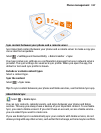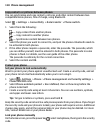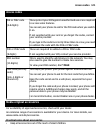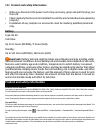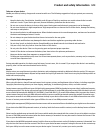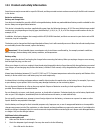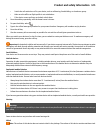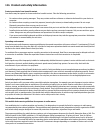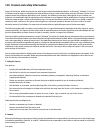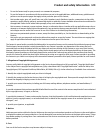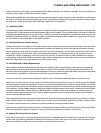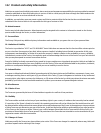
• Switch the call restrictions off in your device, such as call barring, fixed dialling, or closed user group.
• Make sure the offline or flight profile is not switched on.
• If the device screen and keys are locked, unlock them.
3 Press the end key repeatedly, until the home screen is shown.
4 To open the dialler, select
.
5 Type in the official emergency number for your present location. Emergency call numbers vary by location.
6Press the call key.
7 Give the necessary info as accurately as possible. Do not end the call until given permission to do so.
When you switch your device on for the first time, you are asked to create your Nokia account. To make an emergency call
during the account setup, press the call key.
Important: Activate both cellular and internet calls, if your device supports internet calls. The device may attempt to make
emergency calls both through cellular networks and through your internet call service provider. Connections in all conditions
cannot be guaranteed. Never rely solely on any wireless device for essential communications like medical emergencies.
Small children
Your device and its accessories are not toys. They may contain small parts. Keep them out of the reach of small children.
Medical devices
Operation of radio transmitting equipment, including wireless phones, may interfere with the function of inadequately
protected medical devices. Consult a physician or the manufacturer of the medical device to determine whether they are
adequately shielded from external radio frequency energy.
Implanted medical devices
Manufacturers of medical devices recommend a minimum separation of 15.3 centimetres (6 inches) between a wireless device
and an implanted medical device, such as a pacemaker or implanted cardioverter defibrillator, to avoid potential interference
with the medical device. Persons who have such devices should:
• Always keep the wireless device more than 15.3 centimetres (6 inches) from the medical device.
• Not carry the wireless device in a breast pocket.
• Hold the wireless device to the ear opposite the medical device.
• Switch the wireless device off if there is any reason to suspect that interference is taking place.
• Follow the manufacturer directions for the implanted medical device.
If you have any questions about using your wireless device with an implanted medical device, consult your health care provider.
Hearing
Warning:
When you use the headset, your ability to hear outside sounds may be affected. Do not use the headset where it can endanger
your safety.
Some wireless devices may interfere with some hearing aids.
Nickel
Note: The surface of this device does not contain nickel in the platings. The surface of this device contains stainless steel.
Product and safety information 125



